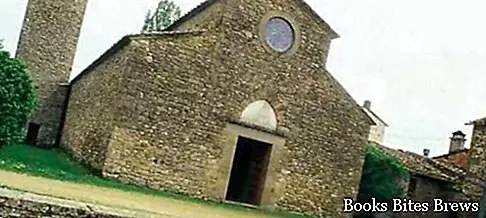What to see in Anghiari, attractions and monuments to see in this ancient village in the province of Arezzo inserted in an enchanting landscape.
Tourist information
The village of Anghiari, inserted in a landscape that offers enchanting panoramic views and in a borderland since Roman times, offers many historical and architectural ideas.
Beautiful medieval village, it is located about 30 kilometers from Arezzo, in the upper Tiber valley, in Tuscany near the border with Umbria.
The first time the name of Anghiari appears is on a parchment dating back to 1048, preserved in the archives of Città di Castello.
When the famous Battle of Anghiari took place, on 29 June 1440, the village was already ruled by the Florentines, who allies with the Pope managed to defeat the Milanese army of Filippo Maria Visconti and assert their dominion in Tuscany.
The battle, also remembered by Machiavelli in his writings, is famous above all because it was represented by Leonardo Da Vinci in a fresco in the Salone dei Cinquecento, inside the Palazzo Vecchio in Florence.
Unfortunately, revealing the unsuitable technique used, the work was not completed and in 1557 it was covered by Vasari's frescoes.
Anghiari is a place linked to San Francesco, who on his return from Verna used to stay in the nearby castle of Montauto, owned by his friends Barbolani Counts.
Even during the last trip from Verna to Assisi, San Francesco made a stop at the castle where he donated his dress to Count Alberto.
It is a gray wool tunic that St. Francis wore when La Verna received the stigmata on the mountain.
The habit, initially kept in custody by the Barbolani Counts, was transferred first to the convent of Monte alle Croci and later to the church of Ognissanti in Florence, today it is kept in the Convent of Verna.
Recommended readings- Artimino (Tuscany): what to see
- San Galgano (Tuscany): what to see
- Poggibonsi (Tuscany): what to see
- Castiglione di Garfagnana (Tuscany): what to see
- Tuscany: Sunday day trips
What see
Another place linked to San Francesco is the church of the Cross in Anghiari, built where tradition has it that the Saint placed a cross and blessed the valley below.
The origin of the town of Anghiari dates back to the eleventh century, when the Camaldolese monks contributed, with the construction of a new monastery, to the development of the place.
The mighty building of the Monastery dedicated to San Bartolomeo, transformed by the Perugini into a defensive building, and the clock tower, called the Campano, constitute the emerging elements of the village, surrounded by a defensive wall, which has remained almost intact, built between the eleventh and thirteenth centuries, distinguishable also from the apse of the Church of Sant'Agostino and from the Bastion of the Vicar, built in 1553 to strengthen the walls.
The Badia Church dates back to the eleventh century, the first place of worship in the country.
At the center of the village is Palazzo Pretorio, whose facade is adorned with terracotta and stone coats of arms that belonged to the Podestàs and Vicars of Anghiari, Palazzo Taglieschi, which belonged to the Anghiari family of the Taglieschi, constitutes an example of fifteenth-century private architecture ad residential use, it houses the State Museum, the Palazzo del Marzocco, home of the Battle of Anghiari Documentation Center, the Teatro dei Ricomposti, built in 1789.
The church of Santa Maria delle Grazie, built in the eighteenth century also called Chiesa del Fosso, and the church of Sant'Agostino, built in the mid-fifteenth century on a church of the thirteenth century, enrich the beautiful fortified village, animated by many small artisan shops and collected along the steep Ruga di San Martino, the fourteenth-century road built by Piero Tarlati known as Saccone, which crosses the town and continues straight until Sansepolcro.
Every year, in November, the Bringoli and San Martino festivals take place in Anghiari.




